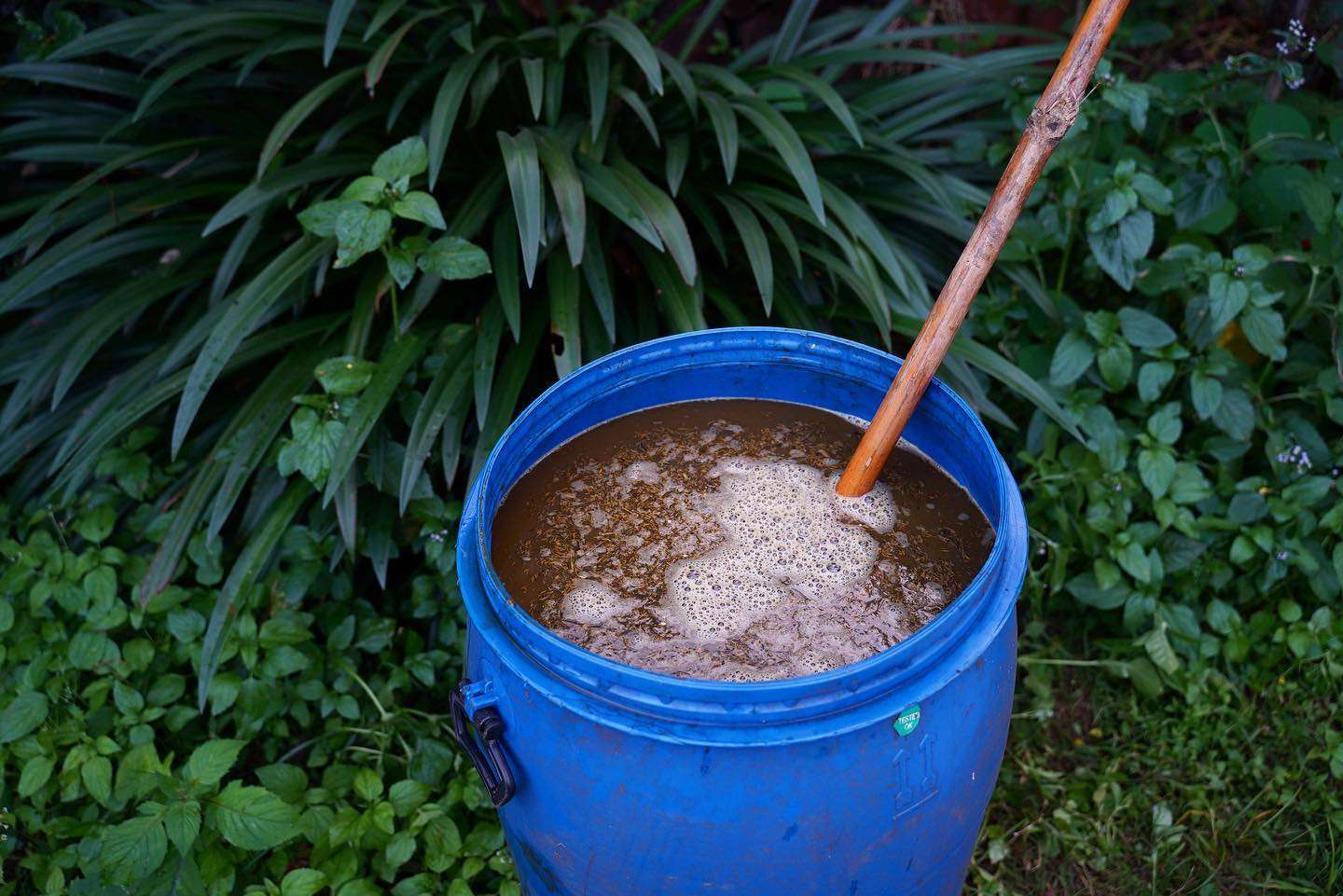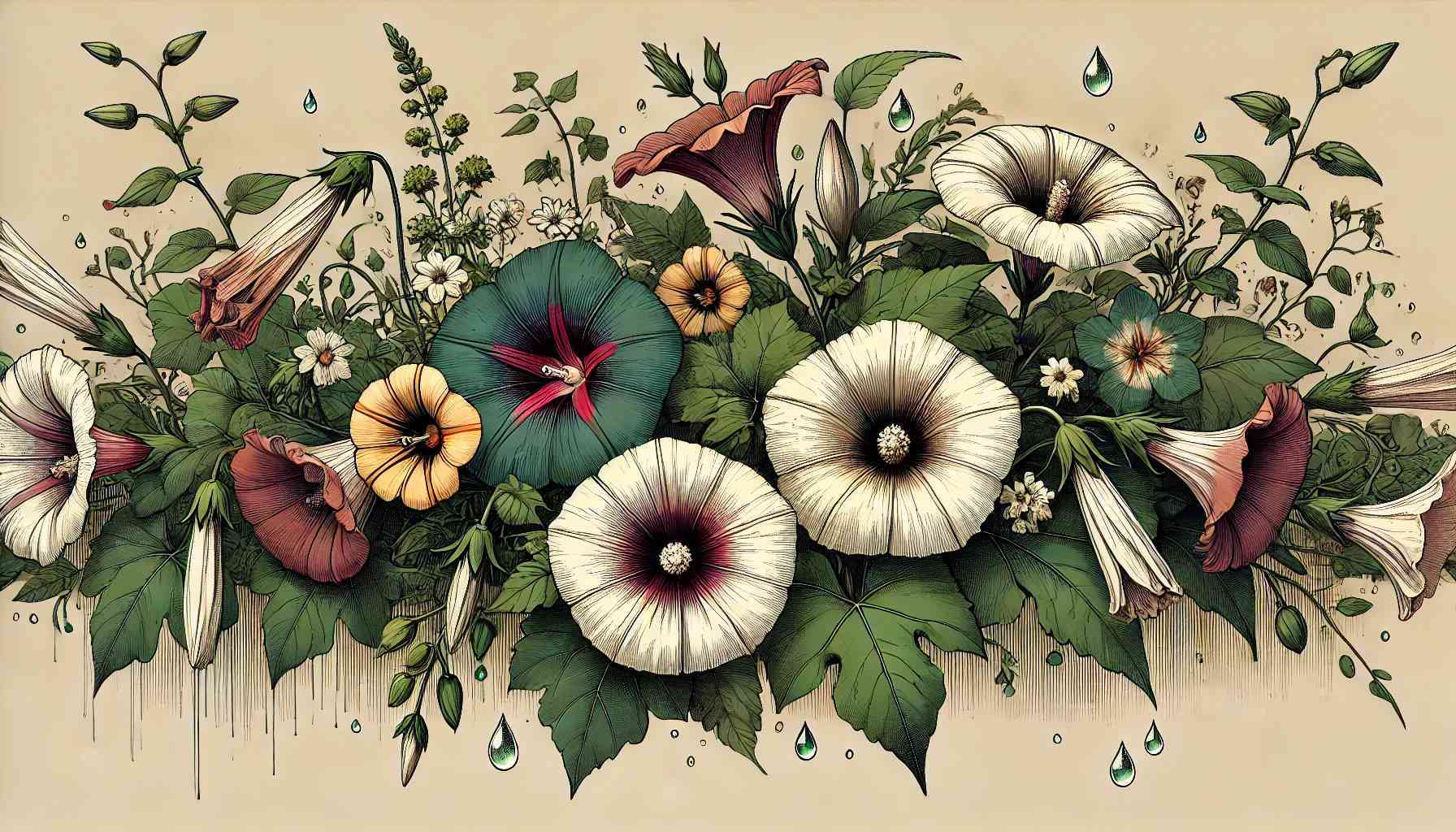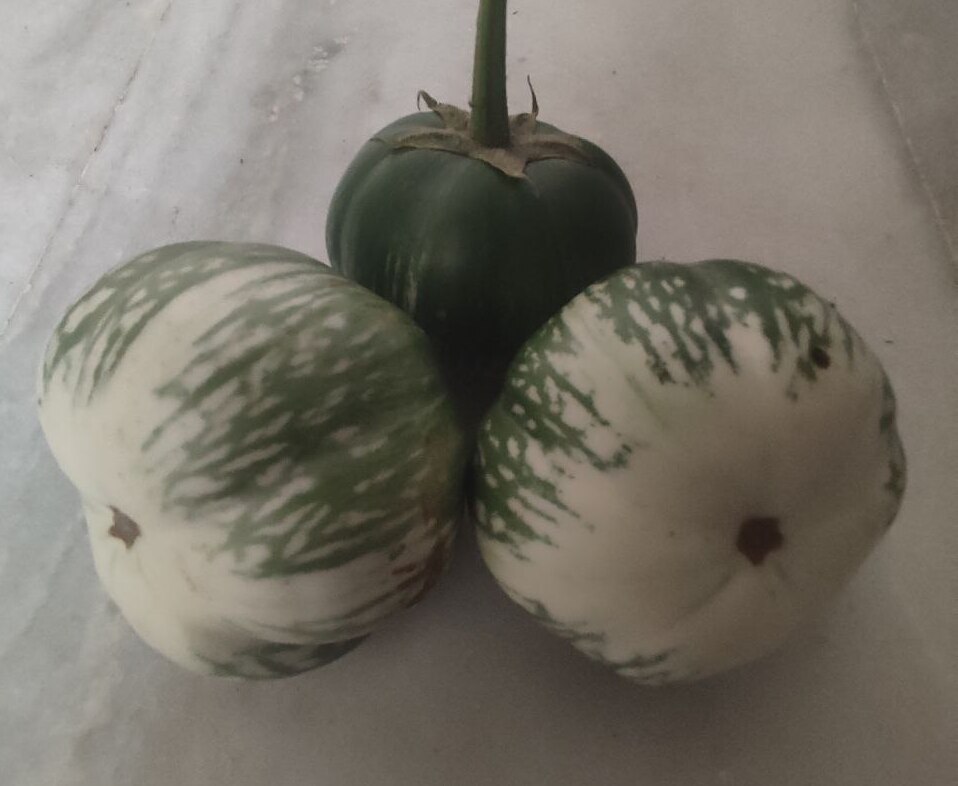
Panchagavya or panchakavyam a magical mixture that’s been around since ancient times, cherished in traditional Hindu rituals. This blend of cow dung, urine, milk, curd, and ghee is believed to bring in peace and prosperity.
But guess what? Its magic doesn’t end there! Today, we’re going to explore a different side of Panchagavya. It’s a champion for all kinds of plants, promoting growth and immunity. Panchagavya is also a fantastic organic pesticide! Intrigued?
Let’s explore how this tradition-blessed mixture can give our gardens a major boost!
Origins of Panchagavya
Before we get into the how-tos, let’s travel back in time to understand the roots of Panchagavya. This age-old concoction has its origin in India, dating back several thousand years. Historically used in Ayurvedic medicine and Hindu rituals, Panchagavya was considered divine due to its preparation involving five sacred products (“Pancha” means five, “Gavya” means cow derivatives) from the holy cow.
Traditionally, the preparation method of Panchagavya was passed on from one generation to the next orally. It involved combining the five ingredients in specific proportions and allowing the mixture to ferment over a certain period.
Understanding the Ingredients
Panchagavya consists of five sacred cow products, each bringing its unique nutritional and microbial benefits to your garden. Let’s take a moment to appreciate the humble ingredients that make up Panchagavya:
- Cow dung (Gomaya): Cow dung is an age-old organic manure, loved by gardeners worldwide for its rich organic matter content. It improves soil structure, enhances its ability to retain moisture, and is packed with essential plant nutrients like nitrogen, phosphorus, and potassium.
- Cow urine (Gomutra): While it may seem surprising, cow urine is a veritable treasure chest of nutrients. It’s a source of urea, a natural fertilizer that supplies nitrogen, vital for plant growth. Besides nitrogen, cow urine contains traces of other minerals like phosphorus and potassium.
- Cow milk (Godugdha): Cow milk adds calcium to the soil, a vital nutrient for plant growth and development. It aids in plant cell growth, strengthens plant tissues, and helps in neutralizing soil acidity. Additionally, milk sugars can feed beneficial bacteria and fungi in the soil, contributing to a healthier soil biome.
- Cow curd (Goghrta): Curd introduces beneficial microorganisms like lactic acid bacteria into the soil. These bacteria contribute to soil health by breaking down organic matter into plant-available nutrients and suppressing harmful pathogen populations.
- Cow ghee (Goghrita): Ghee, clarified butter, is believed to stimulate microbial activity, contributing to a rich and thriving soil ecosystem. Although the impact of ghee is less directly related to plant nutrition, it plays a part in enhancing the overall vitality of the soil.
These ingredients, on their own, already bring significant nutritional value to our gardens. But when combined in Panchagavya, they offer an unmatched organic concoction to supercharge your plants’ growth.
Preparation of Panchagavya
Preparing Panchagavya at home is simple but requires patience. To prepare Panchagavya at home, you need these ingredients in the following ratio: 3:2:1:1:1 for cow dung, cow urine, cow milk, cow curd, and cow ghee, respectively.
- Take 3 parts of fresh cow dung and mix it with 1 part of cow ghee. Mix them thoroughly in a wide-mouthed clay or plastic pot.
- Cover the pot with a breathable cloth and let it sit undisturbed for 3 days.
- After 3 days, add 2 parts of cow urine, 1 part of cow milk, and 1 part of cow curd to the mixture.
- Stir the mixture well and cover it again. For the next 15 to 30 days, stir the mixture once daily in the morning or evening.
- After the fermentation period, your Panchagavya is ready! You can sieve the mixture to remove any undissolved solids and store the liquid in a cool, dry place.
For more simple and easy homemade organic fertilizers, don’t miss our article on 7 Easy Homemade Organic Fertilizers for Your Plant
Using Panchagavya as Fertilizer
Applying Panchagavya as an organic fertilizer provides numerous benefits. It enhances the growth and yield of plants, improves soil texture, and increases water retention capacity.
As a potent organic fertilizer, Panchagavya can be used in various types of gardening:
- Container gardening: A 3% solution (30 ml of Panchagavya in 1 liter of water) can be used to water the plants every 10-15 days. It provides necessary nutrients and helps in improving the microbial activity in the limited soil volume.
- Small gardens: For small gardens, you can use a watering can to apply the same 3% solution as a soil drench around your plants.
- Agriculture land: For larger agricultural land, Panchagavya can be mixed with irrigation water or applied through a sprayer. Regular application can significantly improve soil fertility and crop yield.
Panchagavya as a Natural Pesticide
Panchagavya also doubles up as an excellent natural pesticide. Its potent concoction repels pests and mitigates plant diseases, keeping your plants healthy without harming the environment, unlike synthetic pesticides. Regular application improves the plant’s resistance against diseases and pests.
- Pests: Panchagavya is effective against a variety of pests, including aphids, scales, mealybugs, and mites. A 3% solution sprayed on the plant foliage can deter these pests.
- Diseases: It can prevent fungal diseases like powdery mildew and downy mildew, as well as bacterial diseases. The beneficial microbes in Panchagavya outcompete pathogenic microbes, thereby reducing disease incidence.
The Magic of Panchagavya in Agriculture

Panchagavya is like a miracle drink for our crops. It boosts their growth and helps them stand tall against pests and diseases. And the best part? It does all this naturally, without harming our Mother Earth!
Farmers using Panchagavya have found it to be a real game-changer. It not only gives them a richer yield but also cuts down their farming costs. Plus, it encourages the plants to spread out their leaves more. This means more sunlight-catching green, leading to better growth.
The good news doesn’t stop here. Panchagavya is a friend to our soil, too. It helps the soil hold more water, which means less need for watering. Also, it makes roots stronger, leading to healthier plants and more fruits and veggies.
Fruits and veggies smell fresher, taste sweeter, and are packed with more natural goodness. So, with Panchagavya, it’s not just our farms that win, it’s our health too!
Conclusion
Gardening with Panchagavya is like embracing an age-old friend. It’s a blend of tradition, nature, and science. Not only does it support robust plant growth and protects against pests and diseases, but it also nurtures the soil, promoting a sustainable gardening environment.
So why not try and bring a touch of this ancient wisdom to your garden and witness the difference yourself?
Have you been using Panchagavya in your gardens, or are you considering it? We would absolutely love to hear from you! Have you got any questions about it? Or perhaps some stories or tips to share from your experience?
Feel free to drop a comment below. Let’s turn the comment section into a vibrant gardeners’ meet where we can exchange ideas and experience.
Happy organic gardening!





3 thoughts on “Discovering the Ancient Secrets of Panchagavya: Origins, Preparation, and Uses”
Amazing article, thank you for sharing.
Could you please recommend me a good company to order the best quality Panchagavya from? I outside of India and wanted to order some to try. I see some recipes add ripe bananas and coconut water ect as well. I’ve considered making myself but for the price available. I plan to use as more as a super food for my soil, than for foliar so having the active microbes of the fresh mix is not as important for myself. Could you please recommend the best known brand in India for Panchagavya if known, thankyou very much.
Namste,
We in the West can learn a lot from old wisdom.
This was an interesting read and luckily we have cows plenty where I live. I shall try to gather all the ingredients and make this concoction. I’m all into organic growing, building my own soil and adding all sorts of ingredients to aid the living organisms that reside inside.
Regards,
Bob